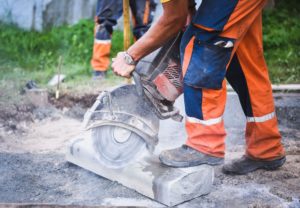 Back in March of 2016, OSHA published a regulation that requires construction employers to limit worker exposure to respirable crystalline silica.
Back in March of 2016, OSHA published a regulation that requires construction employers to limit worker exposure to respirable crystalline silica.
Silica can be dangerous when inhaled by construction workers, causing lung disease and even cancer. Silica dust is frequently found where things like cutting, grinding, sawing, drilling or crushing is taking place. This fine dust is created when sawing bricks or grinding stone, for example. OSHA estimates that over 2 million construction workers are exposed to respirable silica annually, at over 6,000 job sites.
Under this new ruling, employers are required to limit worker exposure and take steps to ensure that they are protected. OSHA created two standards, one is specifically for the construction industry, and the other is for general and maritime industries.
Under the construction guidelines, employers are allowed to use a control method, which is set out in OSHA rules, or they can measure worker’s exposure independently.
- Create and implement a written control plan. The plan will identify which tasks are particularly hazardous and employ methods to protect workers;
- Identify a competent person who will be in charge of implementing the plan;
- Restrict any housekeeping practices that expose workers;
- Provide medical exams to any worker that is required to wear a respirator for more than 30 days per year;
- Train workers on ways to limit exposure; and
- Keep records of worker exposure and exams.
Recently, OSHA has announced a 3 month delay in enforcing this new regulation. While it was originally set to take effect in June, the scheduled start date is now September 23, 2017. OSHA has stated that additional time is necessary so that they can provide guidance to employers.
The Construction Industry Safety Coalition said that while they are happy about the extension, they remain concerned about the feasibility and enforcement of the new regulation. They have suggested that the enforcement be delayed for one year.
